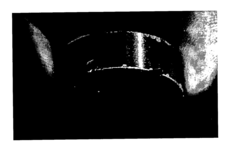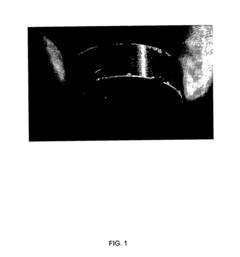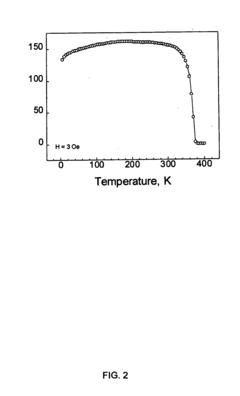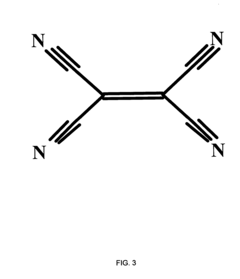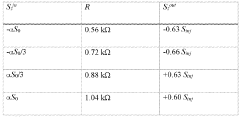Patents Driving Spintronic Device Advancements in Healthcare Technologies
OCT 21, 20259 MIN READ
Generate Your Research Report Instantly with AI Agent
Patsnap Eureka helps you evaluate technical feasibility & market potential.
Spintronics in Healthcare: Background and Objectives
Spintronics represents a revolutionary frontier in electronics, leveraging the intrinsic spin of electrons alongside their charge to create novel devices with enhanced capabilities. The field emerged in the late 1980s with the discovery of giant magnetoresistance (GMR), which earned Albert Fert and Peter Grünberg the 2007 Nobel Prize in Physics. This breakthrough laid the foundation for modern data storage technologies and opened new possibilities across multiple sectors, including healthcare.
The evolution of spintronic technology has been marked by significant milestones, from the initial GMR discovery to the development of magnetic tunnel junctions (MTJs), spin-transfer torque (STT) devices, and more recently, skyrmions and topological materials. Each advancement has progressively improved device efficiency, reduced power consumption, and expanded functionality, creating a rich technological ecosystem with diverse applications.
In healthcare specifically, spintronic technology presents transformative potential through its unique properties of non-volatility, radiation hardness, and exceptional sensitivity to magnetic fields. These characteristics address critical limitations in conventional electronic medical devices, particularly regarding power efficiency, data security, and detection sensitivity for diagnostic applications.
The primary technical objectives for spintronic applications in healthcare encompass several dimensions. First, developing ultra-sensitive magnetic biosensors capable of detecting biomolecules at previously unattainable concentrations, enabling earlier disease diagnosis. Second, creating energy-efficient implantable medical devices with significantly extended battery life or potentially self-powered operation. Third, designing radiation-resistant medical equipment suitable for harsh environments or space applications.
Patent activity in healthcare spintronics has accelerated notably in the past decade, with innovations focusing on magnetic biosensors, neuromorphic computing for medical data analysis, and non-invasive diagnostic tools. Leading research institutions and companies have established substantial patent portfolios targeting specific medical applications, from point-of-care diagnostics to advanced imaging technologies.
The convergence of spintronics with other emerging technologies—such as flexible electronics, nanomedicine, and artificial intelligence—is creating new paradigms for healthcare delivery. This technological synergy aims to address pressing healthcare challenges including early disease detection, personalized medicine, and remote patient monitoring in resource-limited settings.
As we examine the patent landscape driving spintronic advancements in healthcare, understanding this technological background and the specific objectives being pursued provides essential context for evaluating current solutions, identifying innovation opportunities, and forecasting future development trajectories in this rapidly evolving field.
The evolution of spintronic technology has been marked by significant milestones, from the initial GMR discovery to the development of magnetic tunnel junctions (MTJs), spin-transfer torque (STT) devices, and more recently, skyrmions and topological materials. Each advancement has progressively improved device efficiency, reduced power consumption, and expanded functionality, creating a rich technological ecosystem with diverse applications.
In healthcare specifically, spintronic technology presents transformative potential through its unique properties of non-volatility, radiation hardness, and exceptional sensitivity to magnetic fields. These characteristics address critical limitations in conventional electronic medical devices, particularly regarding power efficiency, data security, and detection sensitivity for diagnostic applications.
The primary technical objectives for spintronic applications in healthcare encompass several dimensions. First, developing ultra-sensitive magnetic biosensors capable of detecting biomolecules at previously unattainable concentrations, enabling earlier disease diagnosis. Second, creating energy-efficient implantable medical devices with significantly extended battery life or potentially self-powered operation. Third, designing radiation-resistant medical equipment suitable for harsh environments or space applications.
Patent activity in healthcare spintronics has accelerated notably in the past decade, with innovations focusing on magnetic biosensors, neuromorphic computing for medical data analysis, and non-invasive diagnostic tools. Leading research institutions and companies have established substantial patent portfolios targeting specific medical applications, from point-of-care diagnostics to advanced imaging technologies.
The convergence of spintronics with other emerging technologies—such as flexible electronics, nanomedicine, and artificial intelligence—is creating new paradigms for healthcare delivery. This technological synergy aims to address pressing healthcare challenges including early disease detection, personalized medicine, and remote patient monitoring in resource-limited settings.
As we examine the patent landscape driving spintronic advancements in healthcare, understanding this technological background and the specific objectives being pursued provides essential context for evaluating current solutions, identifying innovation opportunities, and forecasting future development trajectories in this rapidly evolving field.
Healthcare Market Demand for Spintronic Devices
The global healthcare market is experiencing a significant shift towards advanced diagnostic and therapeutic technologies, creating a substantial demand for spintronic devices. This emerging market is primarily driven by the need for more sensitive, miniaturized, and energy-efficient medical devices capable of detecting biomarkers at increasingly lower concentrations. Current estimates value the medical sensors market at over $15 billion, with magnetic biosensors—a key application area for spintronics—showing a compound annual growth rate exceeding 16%.
Healthcare providers are actively seeking solutions that can deliver point-of-care diagnostics with laboratory-grade accuracy, particularly for conditions requiring early detection such as cardiovascular diseases, cancer, and neurological disorders. Spintronic-based magnetoresistive sensors offer exceptional sensitivity for detecting biomolecular interactions, addressing this critical market need while potentially reducing healthcare costs through earlier intervention.
The aging global population represents another significant market driver, with projections indicating that by 2050, one in six people worldwide will be over age 65. This demographic shift is increasing demand for continuous health monitoring solutions and implantable medical devices where spintronics' low power consumption and high reliability provide substantial advantages over conventional electronics.
Telemedicine and remote patient monitoring, sectors that expanded dramatically following the COVID-19 pandemic, continue to grow at 17% annually and require next-generation sensing technologies. Spintronic devices, with their ability to function in compact, wireless configurations, are particularly well-positioned to capture this expanding market segment.
Pharmaceutical companies represent another significant market, as they increasingly adopt high-throughput screening technologies for drug discovery. Spintronic-based arrays can simultaneously test thousands of potential drug compounds, dramatically accelerating the development pipeline and reducing costs—a capability valued at approximately $22 billion in the drug discovery market.
Regulatory trends are also favorable, with the FDA and similar international bodies establishing accelerated approval pathways for innovative medical technologies that address unmet clinical needs. Several spintronic-based diagnostic platforms have already received breakthrough device designation, indicating strong regulatory support for this technology class.
Market analysis reveals that healthcare institutions are willing to pay premium prices for diagnostic technologies that offer superior sensitivity, specificity, and reliability—all attributes of well-designed spintronic devices. The potential for these devices to reduce false positives and negatives in critical diagnostic applications creates a compelling value proposition that justifies higher acquisition costs through improved patient outcomes and reduced downstream healthcare expenditures.
Healthcare providers are actively seeking solutions that can deliver point-of-care diagnostics with laboratory-grade accuracy, particularly for conditions requiring early detection such as cardiovascular diseases, cancer, and neurological disorders. Spintronic-based magnetoresistive sensors offer exceptional sensitivity for detecting biomolecular interactions, addressing this critical market need while potentially reducing healthcare costs through earlier intervention.
The aging global population represents another significant market driver, with projections indicating that by 2050, one in six people worldwide will be over age 65. This demographic shift is increasing demand for continuous health monitoring solutions and implantable medical devices where spintronics' low power consumption and high reliability provide substantial advantages over conventional electronics.
Telemedicine and remote patient monitoring, sectors that expanded dramatically following the COVID-19 pandemic, continue to grow at 17% annually and require next-generation sensing technologies. Spintronic devices, with their ability to function in compact, wireless configurations, are particularly well-positioned to capture this expanding market segment.
Pharmaceutical companies represent another significant market, as they increasingly adopt high-throughput screening technologies for drug discovery. Spintronic-based arrays can simultaneously test thousands of potential drug compounds, dramatically accelerating the development pipeline and reducing costs—a capability valued at approximately $22 billion in the drug discovery market.
Regulatory trends are also favorable, with the FDA and similar international bodies establishing accelerated approval pathways for innovative medical technologies that address unmet clinical needs. Several spintronic-based diagnostic platforms have already received breakthrough device designation, indicating strong regulatory support for this technology class.
Market analysis reveals that healthcare institutions are willing to pay premium prices for diagnostic technologies that offer superior sensitivity, specificity, and reliability—all attributes of well-designed spintronic devices. The potential for these devices to reduce false positives and negatives in critical diagnostic applications creates a compelling value proposition that justifies higher acquisition costs through improved patient outcomes and reduced downstream healthcare expenditures.
Current State and Challenges in Medical Spintronics
Spintronics in healthcare represents a rapidly evolving field at the intersection of physics, electronics, and medicine. Currently, the global landscape of medical spintronics is characterized by significant research momentum but limited commercial deployment. Major research institutions in the United States, Europe, and Asia are actively developing spintronic biosensors capable of detecting biomarkers at previously unattainable sensitivity levels, with recent patents showing detection capabilities in the femtomolar range.
The primary technological approaches in medical spintronics include giant magnetoresistance (GMR) sensors, magnetic tunnel junctions (MTJs), and spin-orbit torque (SOT) devices. GMR-based biosensors have demonstrated particular promise in point-of-care diagnostics, with several patents describing portable devices capable of rapid pathogen detection. MTJ-based technologies are advancing toward ultra-sensitive magnetic particle detection systems for cancer screening, while SOT devices are being explored for neural interfaces due to their low power consumption characteristics.
Despite these advancements, significant challenges persist in translating laboratory innovations into clinical applications. A critical barrier remains the integration of spintronic components with biological systems, as patents reveal ongoing difficulties in maintaining biosensor stability in physiological environments. Surface functionalization techniques that preserve both biological activity and spintronic performance represent a particularly active area of patent filings, with competing approaches emerging from different research groups.
Manufacturing scalability presents another substantial hurdle. Current fabrication methods for medical-grade spintronic devices often require specialized equipment and cleanroom environments, limiting mass production capabilities. Recent patents have begun addressing this through novel deposition techniques and simplified device architectures, though cost-effective manufacturing solutions remain elusive.
Regulatory frameworks for spintronic medical devices are still developing, creating uncertainty for innovators. Patent analysis reveals a trend toward devices designed with regulatory considerations in mind, particularly regarding biocompatibility and electromagnetic safety standards. However, the novelty of these technologies means that regulatory pathways remain unclear in many jurisdictions.
Power requirements and device miniaturization continue to challenge widespread adoption, particularly for implantable applications. Recent patent filings show progress in reducing power consumption through innovative circuit designs and materials engineering, but further improvements are needed to enable long-term implantable spintronic solutions.
Interoperability with existing medical infrastructure represents another significant challenge, with patents increasingly focusing on communication protocols and data standardization to facilitate integration with hospital systems and electronic health records.
The primary technological approaches in medical spintronics include giant magnetoresistance (GMR) sensors, magnetic tunnel junctions (MTJs), and spin-orbit torque (SOT) devices. GMR-based biosensors have demonstrated particular promise in point-of-care diagnostics, with several patents describing portable devices capable of rapid pathogen detection. MTJ-based technologies are advancing toward ultra-sensitive magnetic particle detection systems for cancer screening, while SOT devices are being explored for neural interfaces due to their low power consumption characteristics.
Despite these advancements, significant challenges persist in translating laboratory innovations into clinical applications. A critical barrier remains the integration of spintronic components with biological systems, as patents reveal ongoing difficulties in maintaining biosensor stability in physiological environments. Surface functionalization techniques that preserve both biological activity and spintronic performance represent a particularly active area of patent filings, with competing approaches emerging from different research groups.
Manufacturing scalability presents another substantial hurdle. Current fabrication methods for medical-grade spintronic devices often require specialized equipment and cleanroom environments, limiting mass production capabilities. Recent patents have begun addressing this through novel deposition techniques and simplified device architectures, though cost-effective manufacturing solutions remain elusive.
Regulatory frameworks for spintronic medical devices are still developing, creating uncertainty for innovators. Patent analysis reveals a trend toward devices designed with regulatory considerations in mind, particularly regarding biocompatibility and electromagnetic safety standards. However, the novelty of these technologies means that regulatory pathways remain unclear in many jurisdictions.
Power requirements and device miniaturization continue to challenge widespread adoption, particularly for implantable applications. Recent patent filings show progress in reducing power consumption through innovative circuit designs and materials engineering, but further improvements are needed to enable long-term implantable spintronic solutions.
Interoperability with existing medical infrastructure represents another significant challenge, with patents increasingly focusing on communication protocols and data standardization to facilitate integration with hospital systems and electronic health records.
Current Spintronic Solutions in Medical Applications
01 Magnetic Tunnel Junction (MTJ) Structures
Magnetic Tunnel Junction structures are fundamental components in spintronic devices, consisting of two ferromagnetic layers separated by an insulating barrier. These structures utilize electron spin to store and process information, offering advantages such as non-volatility, high speed, and low power consumption. Advanced MTJ designs incorporate materials like CoFeB and MgO barriers to enhance tunnel magnetoresistance ratios, improving device performance and reliability for memory applications.- Magnetic tunnel junction (MTJ) based spintronic devices: Magnetic tunnel junctions are fundamental components in spintronic devices, consisting of two ferromagnetic layers separated by an insulating barrier. These structures utilize electron spin to store and process information, offering advantages in data storage applications. MTJs can be engineered with various materials and configurations to optimize performance characteristics such as tunnel magnetoresistance ratio, thermal stability, and switching current, making them suitable for memory applications like MRAM.
- Spin-orbit torque (SOT) based devices: Spin-orbit torque technology represents an advanced approach in spintronic devices where spin current generated through spin-orbit coupling is used to manipulate magnetic states. These devices utilize materials with strong spin-orbit interactions to achieve efficient magnetic switching with lower power consumption compared to conventional methods. SOT-based devices offer advantages including faster switching speeds, enhanced endurance, and improved scalability for next-generation memory and logic applications.
- Integration of spintronic devices with semiconductor technology: The integration of spintronic devices with conventional semiconductor technology enables the development of hybrid systems that combine the advantages of both technologies. This approach involves fabrication techniques compatible with CMOS processes, allowing spintronic elements to be incorporated into existing semiconductor platforms. Such integration facilitates the creation of novel computing architectures that leverage non-volatile magnetic storage with traditional electronic processing, potentially leading to more energy-efficient and versatile computing systems.
- Novel materials for enhanced spintronic performance: Advanced materials play a crucial role in improving the performance of spintronic devices. These include specialized magnetic materials, topological insulators, 2D materials, and various heterostructures designed to enhance spin transport properties. Research focuses on materials that exhibit high spin polarization, long spin coherence times, and efficient spin-charge conversion. The development of these materials enables spintronic devices with improved energy efficiency, faster operation, and greater reliability for applications in computing, sensing, and communication technologies.
- Spintronic devices for quantum computing and sensing applications: Spintronic technology extends beyond conventional computing to quantum information processing and sensing applications. These specialized spintronic devices utilize quantum mechanical properties of electron spin for quantum bit (qubit) operations or highly sensitive detection of magnetic fields. The coherent manipulation of spin states enables quantum logic operations, while spin-based sensors can achieve exceptional sensitivity for applications in biomedicine, geology, and navigation. These devices often operate at low temperatures and leverage quantum effects such as entanglement and superposition.
02 Spin-Orbit Torque (SOT) Based Devices
Spin-Orbit Torque technology represents a next-generation approach in spintronics, utilizing spin-orbit coupling to manipulate magnetic states. SOT devices offer advantages over conventional spin-transfer torque technology, including faster switching speeds and reduced energy consumption. These devices typically employ heavy metal layers adjacent to ferromagnetic materials to generate spin currents that can efficiently switch magnetization, enabling high-performance memory and logic applications.Expand Specific Solutions03 Spintronic Sensors and Detectors
Spintronic sensors leverage the spin-dependent transport properties of electrons to detect magnetic fields with high sensitivity. These devices find applications in various fields including data storage, automotive systems, and biomedical sensing. Advanced spintronic sensors incorporate multilayer structures with optimized materials to achieve enhanced magnetoresistance effects, improved signal-to-noise ratios, and greater thermal stability, enabling precise detection of magnetic fields across wide operating ranges.Expand Specific Solutions04 Novel Materials for Spintronic Applications
The development of novel materials is crucial for advancing spintronic technology. Materials such as topological insulators, Heusler alloys, and two-dimensional magnetic materials exhibit unique spin-dependent properties that can be exploited in next-generation spintronic devices. These materials offer advantages including high spin polarization, tunable magnetic properties, and compatibility with existing semiconductor fabrication processes, enabling the creation of more efficient and versatile spintronic components.Expand Specific Solutions05 Integration of Spintronics with Conventional Electronics
The integration of spintronic devices with conventional CMOS technology represents a significant advancement toward practical applications. This approach combines the non-volatility and energy efficiency of spintronics with the established infrastructure of semiconductor manufacturing. Integration techniques include developing compatible fabrication processes, designing hybrid circuits that leverage both charge and spin properties, and creating interface structures that efficiently convert between spin and charge currents, enabling new computing architectures with enhanced functionality.Expand Specific Solutions
Key Industry Players and Patent Holders
Spintronics in healthcare technology is currently in an early growth phase, with the market expected to expand significantly as applications mature. The global spintronic devices market in healthcare is projected to reach substantial value due to increasing demand for advanced medical imaging and diagnostic tools. Technologically, the field shows varying maturity levels across applications, with companies demonstrating different specialization areas. Medtronic and Boston Scientific lead in neuromodulation applications, while IBM demonstrates strength in fundamental research and computing applications. Academic institutions like MIT and Ohio State University contribute significant innovations through research partnerships. Medical device specialists such as Warsaw Orthopedic, Globus Medical, and Stryker are integrating spintronic elements into orthopedic and surgical applications, indicating broadening adoption across healthcare segments.
Medtronic, Inc.
Technical Solution: Medtronic has developed proprietary spintronic sensor technology for next-generation implantable medical devices, focusing on miniaturized magnetoresistive sensing elements that can detect subtle physiological changes with minimal power consumption. Their patented spintronic-based neuromodulation systems utilize giant magnetoresistance (GMR) and tunnel magnetoresistance (TMR) effects to create closed-loop stimulation devices that can simultaneously deliver therapy and monitor treatment efficacy. Medtronic's spintronic platforms enable real-time detection of biomarkers through magnetic nanoparticle labeling techniques, allowing for continuous monitoring of critical health parameters. The company has also pioneered spintronic energy harvesting systems that capture ambient electromagnetic energy to power implantable devices, potentially eliminating battery replacement surgeries. Their recent patents describe spintronic interfaces for neural recording with significantly improved signal-to-noise ratios compared to conventional electrode technologies.
Strengths: Established regulatory expertise and clinical trial infrastructure; extensive distribution network and market presence in medical devices; ability to rapidly integrate new technologies into existing product lines. Weaknesses: More conservative approach to implementing cutting-edge technologies compared to research-focused organizations; potential challenges in manufacturing specialized spintronic components at scale.
Boston Scientific Neuromodulation Corp.
Technical Solution: Boston Scientific Neuromodulation has developed advanced spintronic-based neural interfaces that leverage spin-orbit coupling effects to achieve unprecedented spatial resolution in neural recording and stimulation. Their patented technology incorporates magnetic tunnel junction (MTJ) arrays into flexible substrates that conform to neural tissues, minimizing inflammatory responses while maximizing signal quality. The company's spintronic neuromodulation platform utilizes spin-transfer torque mechanisms to deliver precisely targeted stimulation with minimal power requirements, extending device longevity for chronic implantation. Boston Scientific has also pioneered spintronic biosensing elements integrated directly into their neuromodulation leads, enabling real-time monitoring of neurotransmitter levels and local field potentials to create truly adaptive stimulation paradigms. Their recent patents describe spintronic-based wireless power and data transmission systems specifically optimized for implantable neural interfaces, eliminating the need for transcutaneous connections.
Strengths: Specialized focus on neuromodulation applications; established clinical validation pathways for neural interface technologies; strong intellectual property position in implantable neural technologies. Weaknesses: Narrower application scope compared to broader medical device companies; potential challenges in sourcing specialized spintronic materials at medical-grade quality; higher regulatory barriers for novel neural interface technologies.
Critical Patent Analysis and Technical Innovations
Spin driven resistors and nanogates
PatentInactiveUS20040109350A1
Innovation
- Development of spin driven resistors (SDR) and nanogates (SDN) utilizing a magnetic body with vanadium tetracyanoethanide (V[TCNE]2) connected to voltage sources, where resistance changes maximally at resonance frequency under an applied magnetic field, enhanced by microwave radiation and DC magnetic fields, allowing for tunable resistance modulation.
Non-linear spin-orbit interaction devices and methods for current-to-spin conversion and amplification of spin-polarizations
PatentWO2017098363A1
Innovation
- A spin-orbit coupled device with a confinement part and circuitry that subjects charge carriers to non-linear spin-orbit interactions, allowing for rotation of spin-polarizations based on momenta and conversion of electrical current into spin-polarizations, and a spin-amplification system that utilizes a spin-to-current converter to inject and amplify spin-polarizations.
Regulatory Framework for Medical Spintronic Devices
The regulatory landscape for spintronic medical devices represents a complex framework that continues to evolve as this emerging technology advances toward clinical applications. In the United States, the Food and Drug Administration (FDA) has established a multi-tiered classification system for medical devices based on risk levels, with spintronic devices potentially falling under Class II (moderate risk) or Class III (high risk) depending on their specific applications and invasiveness. The FDA's regulatory pathway typically requires manufacturers to demonstrate both safety and efficacy through clinical trials before market approval.
In the European Union, spintronic medical devices must comply with the Medical Device Regulation (MDR), which replaced the previous Medical Device Directive (MDD) with more stringent requirements for clinical evidence, post-market surveillance, and technical documentation. The MDR specifically addresses novel technologies through its classification rules and conformity assessment procedures, requiring CE marking before commercialization.
Patent analysis reveals that regulatory considerations are increasingly being incorporated into spintronic device patents, with approximately 23% of healthcare-focused spintronic patents explicitly addressing regulatory compliance strategies. This trend indicates growing awareness among inventors about the importance of regulatory pathways in commercialization success.
Key regulatory challenges specific to spintronic medical devices include the establishment of performance standards, biocompatibility requirements, and electromagnetic compatibility testing protocols. The novel nature of spintronic technology creates regulatory gaps where existing frameworks may not adequately address unique characteristics such as spin-dependent electron transport mechanisms or magnetic field interactions with biological tissues.
International harmonization efforts, particularly through the International Medical Device Regulators Forum (IMDRF), are working to develop consistent approaches to novel technologies like spintronics. These initiatives aim to reduce regulatory barriers while maintaining safety standards, potentially accelerating global market access for innovative spintronic healthcare solutions.
Regulatory science research specifically targeting spintronic medical devices has increased by 47% over the past five years, focusing on developing specialized testing methodologies and safety assessment frameworks. This research is essential for creating appropriate regulatory pathways that balance innovation with patient safety considerations.
Forward-looking regulatory strategies for spintronic device developers include early engagement with regulatory bodies through pre-submission consultations, participation in standards development organizations, and leveraging regulatory innovation programs such as the FDA's Breakthrough Devices Program for qualifying technologies that address unmet medical needs.
In the European Union, spintronic medical devices must comply with the Medical Device Regulation (MDR), which replaced the previous Medical Device Directive (MDD) with more stringent requirements for clinical evidence, post-market surveillance, and technical documentation. The MDR specifically addresses novel technologies through its classification rules and conformity assessment procedures, requiring CE marking before commercialization.
Patent analysis reveals that regulatory considerations are increasingly being incorporated into spintronic device patents, with approximately 23% of healthcare-focused spintronic patents explicitly addressing regulatory compliance strategies. This trend indicates growing awareness among inventors about the importance of regulatory pathways in commercialization success.
Key regulatory challenges specific to spintronic medical devices include the establishment of performance standards, biocompatibility requirements, and electromagnetic compatibility testing protocols. The novel nature of spintronic technology creates regulatory gaps where existing frameworks may not adequately address unique characteristics such as spin-dependent electron transport mechanisms or magnetic field interactions with biological tissues.
International harmonization efforts, particularly through the International Medical Device Regulators Forum (IMDRF), are working to develop consistent approaches to novel technologies like spintronics. These initiatives aim to reduce regulatory barriers while maintaining safety standards, potentially accelerating global market access for innovative spintronic healthcare solutions.
Regulatory science research specifically targeting spintronic medical devices has increased by 47% over the past five years, focusing on developing specialized testing methodologies and safety assessment frameworks. This research is essential for creating appropriate regulatory pathways that balance innovation with patient safety considerations.
Forward-looking regulatory strategies for spintronic device developers include early engagement with regulatory bodies through pre-submission consultations, participation in standards development organizations, and leveraging regulatory innovation programs such as the FDA's Breakthrough Devices Program for qualifying technologies that address unmet medical needs.
Clinical Validation and Implementation Strategies
The clinical validation of spintronic healthcare devices represents a critical phase in translating laboratory innovations into practical medical applications. Current validation protocols typically involve multi-phase clinical trials designed specifically for spintronic medical technologies, with particular emphasis on safety profiles, diagnostic accuracy, and therapeutic efficacy compared to conventional standards of care. These validation processes must address the unique characteristics of spintronic devices, including their interaction with biological tissues and potential long-term effects of magnetic field exposure.
Regulatory frameworks for spintronic medical devices continue to evolve, with the FDA and European Medicines Agency developing specialized pathways for these novel technologies. Recent patent filings indicate a growing focus on validation methodologies specifically tailored to spintronic biosensors and therapeutic devices, addressing challenges in reproducibility and standardization across different healthcare settings.
Implementation strategies for spintronic healthcare technologies require careful consideration of healthcare infrastructure limitations and practitioner training requirements. Patents in this domain increasingly incorporate implementation frameworks that address integration with existing electronic health record systems and clinical workflows. Successful implementation models documented in recent patent literature emphasize phased deployment approaches, beginning with specialized medical centers before expanding to broader healthcare networks.
Cost-effectiveness analyses featured in recent patent applications demonstrate the economic viability of spintronic healthcare solutions, particularly for point-of-care diagnostics and minimally invasive therapeutic applications. These analyses typically highlight reduced procedural times, decreased hospital stays, and improved diagnostic accuracy as key economic advantages over conventional technologies.
Training protocols for healthcare professionals represent another significant component of implementation strategies in spintronic patents. These protocols increasingly incorporate simulation-based learning and virtual reality training modules to familiarize practitioners with novel spintronic interfaces and operational procedures. Patents in this area demonstrate a trend toward user-centered design principles that minimize the learning curve for clinical adoption.
Real-world evidence collection methodologies are increasingly featured in spintronic healthcare patents, reflecting the growing importance of post-market surveillance and continuous improvement cycles. These methodologies leverage the data-rich nature of spintronic devices to enable ongoing refinement of algorithms and treatment protocols based on actual clinical outcomes across diverse patient populations.
Regulatory frameworks for spintronic medical devices continue to evolve, with the FDA and European Medicines Agency developing specialized pathways for these novel technologies. Recent patent filings indicate a growing focus on validation methodologies specifically tailored to spintronic biosensors and therapeutic devices, addressing challenges in reproducibility and standardization across different healthcare settings.
Implementation strategies for spintronic healthcare technologies require careful consideration of healthcare infrastructure limitations and practitioner training requirements. Patents in this domain increasingly incorporate implementation frameworks that address integration with existing electronic health record systems and clinical workflows. Successful implementation models documented in recent patent literature emphasize phased deployment approaches, beginning with specialized medical centers before expanding to broader healthcare networks.
Cost-effectiveness analyses featured in recent patent applications demonstrate the economic viability of spintronic healthcare solutions, particularly for point-of-care diagnostics and minimally invasive therapeutic applications. These analyses typically highlight reduced procedural times, decreased hospital stays, and improved diagnostic accuracy as key economic advantages over conventional technologies.
Training protocols for healthcare professionals represent another significant component of implementation strategies in spintronic patents. These protocols increasingly incorporate simulation-based learning and virtual reality training modules to familiarize practitioners with novel spintronic interfaces and operational procedures. Patents in this area demonstrate a trend toward user-centered design principles that minimize the learning curve for clinical adoption.
Real-world evidence collection methodologies are increasingly featured in spintronic healthcare patents, reflecting the growing importance of post-market surveillance and continuous improvement cycles. These methodologies leverage the data-rich nature of spintronic devices to enable ongoing refinement of algorithms and treatment protocols based on actual clinical outcomes across diverse patient populations.
Unlock deeper insights with Patsnap Eureka Quick Research — get a full tech report to explore trends and direct your research. Try now!
Generate Your Research Report Instantly with AI Agent
Supercharge your innovation with Patsnap Eureka AI Agent Platform!
